Your roof is a home’s primary defense against weather and the elements, but it is frequently neglected until a leak develops or mold appears. This maintenance checklist aims to equip you with a plan to prevent expensive repairs, prolong the lifespan of your roof, while protecting your home year-round.
When Is the Best Time to Inspect Your Roof?
During the entire year, having a reliable roof maintenance checklist ensures that your roof is in good standing. Such checklists offer guidance to homeowners in mitigating small problems such as; loose shingles and clogged gutters. By following a seasonal roof maintenance checklist, especially in the spring and fall, you can help mitigate the risks involving your roof while enhancing your home’s overall safety. In addition, it is a proactive solution against unexpected weather conditions, enabling your roof to withstand heavy rain, winds, or snow. Whether you choose to do it yourself or hire professionals, a comprehensive roof maintenance checklist should be your starting point for avoiding prolonged damage.
Why Routine Roof Inspections Are Non-Negotiable
- To maintain the roof on your property, a roofer’s checklist should be followed closely, as this can prevent the accumulation of larger issues such as loose shingles and clogged gutters. Conducting seasonal maintenance, especially in spring and autumn, helps improve safety and prolong the roof’s life, while also preparing it for unpredictable weather such as heavy rain, wind, or snow. A well-organized maintenance checklist can be the difference between expensive repairs and routine upkeep, mitigating long-term damage.
The Ultimate Roof Maintenance Checklist
An effective roof maintenance checklist will help you stay on track with preventative care, warding off damage that could be costly down the road. These 16 essential steps are designed to keep your roof strong, clean, and free from leaks year-round.
Gutter Cleaning:
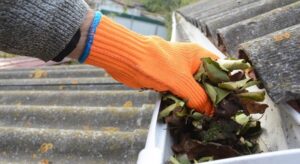
If not cleaned, gutters can overflow with water and as a result, damage the roof and the foundation. Cleaning the gutters post a heavy storm or bi-annually effortlessly integrates into your roof maintenance checklist. As a result, this minimizes preventive restoration of damages.
Debris Removal
Your roof can wear down faster if leaves, twigs, or any other debris are left to collect on it as they can hold moisture. Make it a habit to routinely clear any obstructions as it should be one of the most important maintenance tasks for your roof—particularly if you live near a wooded area. It’s an effortless task that helps maintain the quality of your roof.
Moss/Algae Treatment
Moss, as well as algae, can grow on top of roofs retaining water and causing significant long-term harm. Hence dealing with moss and algae should be part of your routine maintenance checklist. Employing a professional cleaning agency or applying non-harmful treatment solutions can aid in protecting against damage in the future.
Flashing Inspection
Checking The Flashing Around skylights, vents, and chimneys, flashing serves the primary purpose of preventing water from entering into the home. Rust, fissures, or missing caulking around the flashings should also be checked regularly as part of your roof maintenance checklist. These small issues worsen over time, increasing the chances of major leaks.
Shingle Check
Since shingles serve as the first level of defense for your roof, checking them for any cracks, curl or missing parts is crucial. Add this task to your checklist to avoid unnecessary damages. We recommend you check and replace damaged shingles as soon as possible to avoid bigger inconveniences in the future.
Trimming Tree Branches
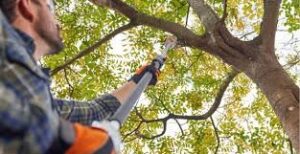
Low-lying branches can scratch your roof or drop debris that can damage the shingles. Make sure that you include the trimming of branches up to six feet away from your roof in the roof maintenance checklist. This small step can go a long way for keeping your roof intact and reducing unnecessary repairs.
Inspect Roof Valleys and Ridges
Owing to the fact that roof valleys and ridges are the main paths for water flow, these two require consistent sealing and cleaning. Remember to check this on your roof maintenance checklist and incorporate it into your routine. Gaps, even if tiny, might harbor debris and lead to leaks so be extra vigilant in these sensitive locations.
Check Roof Vents and Pipes
Vents and pipes on your roof contribute to proper ventilation, but because they rely on seals, they are also susceptible to becoming areas of water ingress. Do not forget to examine these aspects when maintaining your roof. Seal all joints adequately to avoid any leakage that will lead to water destruction.
Ice Dam Prevention
Ice dams may accumulate on your roof if you live in extremely cold conditions during the winter months. For this reason, it is critical to remember to put ice dam prevention on your roof maintenance checklist. Make sure that the attic is properly insulated and ventilated to stop these hazardous blockades.
Attic Inspection
Attics tend to be the first places where roof issues like leaks or mold show up. It is wise to add attic inspection to the roof maintenance checklist – check for damp insulation, visible water stains, or light reflection from the roof. These are sure indicators that the roof requires some work.
Check for Sagging Rooflines
These could mean serious structural problems and thus need special attention. As a part of your roof maintenance checklist, remember to check whether there are any sagging areas. If so, contact a roofing expert immediately to prevent serious impact.
Avoid Downspout Runoff on Roof
Prevent your gutters from spilling out onto the roof underneath. While inspecting your roof, check that downspouts do not run onto the roof. Avoiding this situation will save water from being routed in places that can cause damage.
Seal Skylights and Dormers
The seals of skylights and dormers, if broken, can open to leaks. This area needs proper monitoring as part of regular roof maintenance. Check all seals to ensure no slow leak that would cause adverse impacts over years will damage the house and be left unchecked.
Professional Roof Inspection
It is recommended that you get a professional roof inspection at least once every 12 months. This step is helpful in catching things that might have been missed during a self inspection, including hidden damage and overall maintenance which makes sure the roof serves its purpose for as long as possible.
Minor Repairs and Caulking
Making small overrides like replacing shingles that are not tightly bound or re-caulking flashing should not go unnoticed. Completing these tasks is essential in your roof maintenance checklist. Small things can be done quickly and can save you money in the long run.
Keep Records of All Maintenance
Keeping all your roof checks, inspect out, and cleaning records can come handy in the future for warranties and insurance claims. Add a log as part of your roof maintenance checklist. You can navigate through all documents in terms of legal obligations with ease just by following simple steps like these.
Interior and Exterior Inspection Tips (Quick Recap)
Exterior Focus
- Inspect shingles, flashing, chimney and ensure debris is regularly cleared for as part of roof maintenance checklist.
- Checking gutter and downspout blockages ensures no water damage occurs—critical for your roof maintenance checklist.
- Check that the roof valleys, ridges, and vents boots are sealed and check for leaks as this is one part of your roof maintenance checklist.
Interior Focus
- As part of your roof maintenance checklist, inspect your attic for moisture, leaks, and insulation issues that may escalate into more significant challenges.
- Keep an eye out for mold or wet spots in your attic as they signify roof leakage and should be added to your roof maintenance checklist
- Check the area outside the property and ensure that no light can penetrate the premises. If light is getting through, mark it in your roof maintenance checklist as this could indicate some form of roof damage.
Roof Maintenance Safety Tips
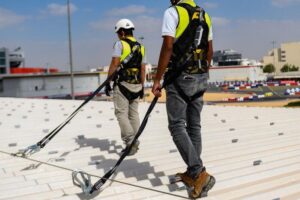
- When it comes to roof maintenance, safety should always be your top priority. Never walk on a wet or moss-covered roof. It’s slippery and dangerous. It’s simply not worth the risk.
- If you need to climb up to check or fix something, make sure you’re using a sturdy ladder and wearing proper safety gear. Take your time and don’t need to rush the job.
- And remember, if the task seems too big or you’re unsure how to handle it, don’t take risks anymore, call in the professionals. Sometimes the safest and smartest move is to leave it to the experts.
How to Get Started with Your Roof Maintenance Checklist
- Start off by printing or saving a digital copy with this roof maintenance checklist so you can refer to it throughout the year.
- Screenshots of noticeable areas in need of fixability can be done throughout the year, providing a clearer vision of photo evidence on the roof maintenance checklist.
- Mark seasonal reminders on your calendar to remain consistent with the roof maintenance checklist. This helps ensure you don’t run into problems at the last minute.
- A professional’s structural examination performed once a year needs to reside at the head office of the roof maintenance checklist nz. The prolonged window can result in opportunistic damages hidden that could cause enhanced harm when uncovered.
Conclusion
You protect your family and property when you maintain your roof. It helps you avoid expensive restorations. Thanks to this roof maintenance checklist, you can master roof care,” said the expression. For best results, do not go on for long intervals of time without taking action, take small steps, and get others involved when it seems too difficult. The effort put towards maintenance sets the stage for fewer shocks in the future and helps strengthen the roof over your home.
Roof Maintenance FAQS:
Q1: How often should I clean my gutters?
Best practice is to clean them out twice every year. During fall and spring. Squeaky clean gutters are one of the fundamental pillars of ensuring an effective roof maintenance checklist.
Q2: Is moss really that bad for my roof?
Since moss traps water, it can rot shingles and the roof underneath will rot and become weak. Including moss treatment in your roof maintenance checklist prevents dealy and expensive leaks.
Q3: What is flashing and why is it important?
Flashing is the protective metal barrier which goes around the edges or apron of the roof, as well as chimneys and vents, to prevent water from seeping in. Broken flashing is a common problem found during a roof maintenance salem checklist review.
Q4: Can I do all roof maintenance myself?
Tasks such as removing debris and checking for damage can be done easily and safely by you. However, for critical repairs and comprehensive inspections, it is better to get experienced roof cleaning contractors.
Q5: How do I know if I need a new roof?
Check for sagging areas, cracked shingles, several leaks, or rot. If these issues show up on your roof maintenance checklist, it might be time for a professional look-over or an outright replacement.
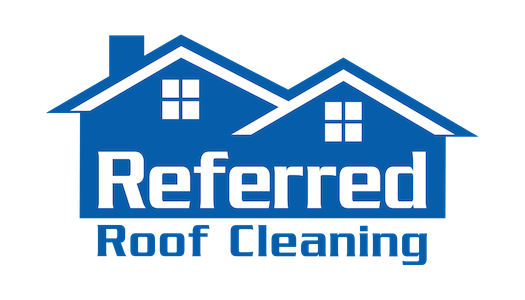
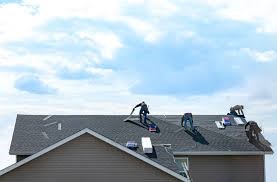
Recent Comments